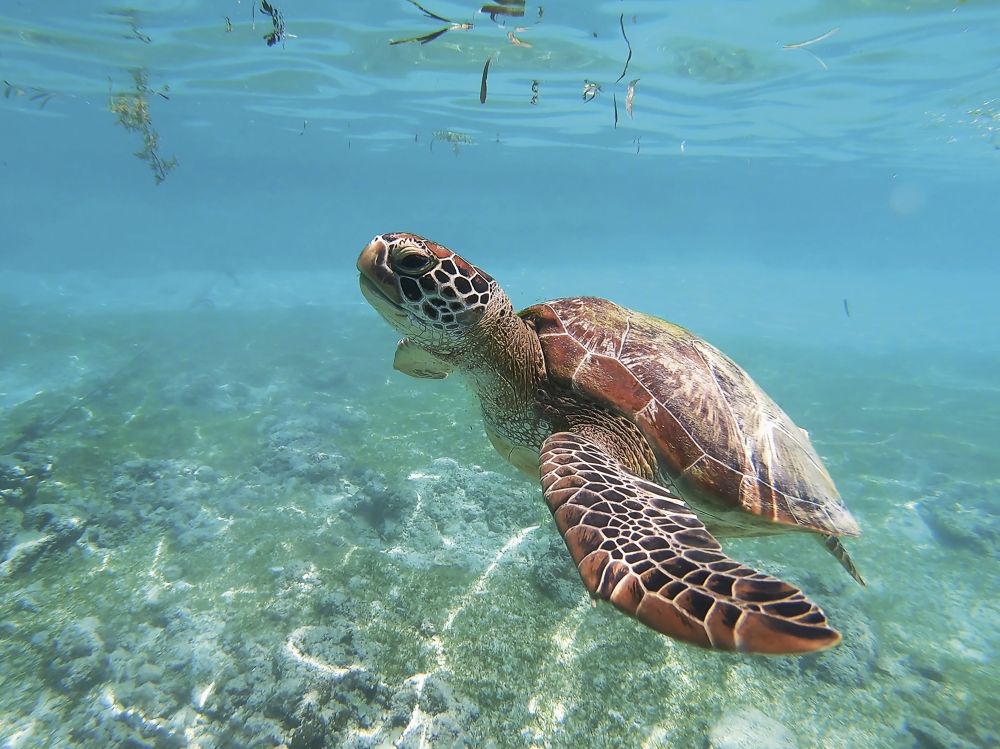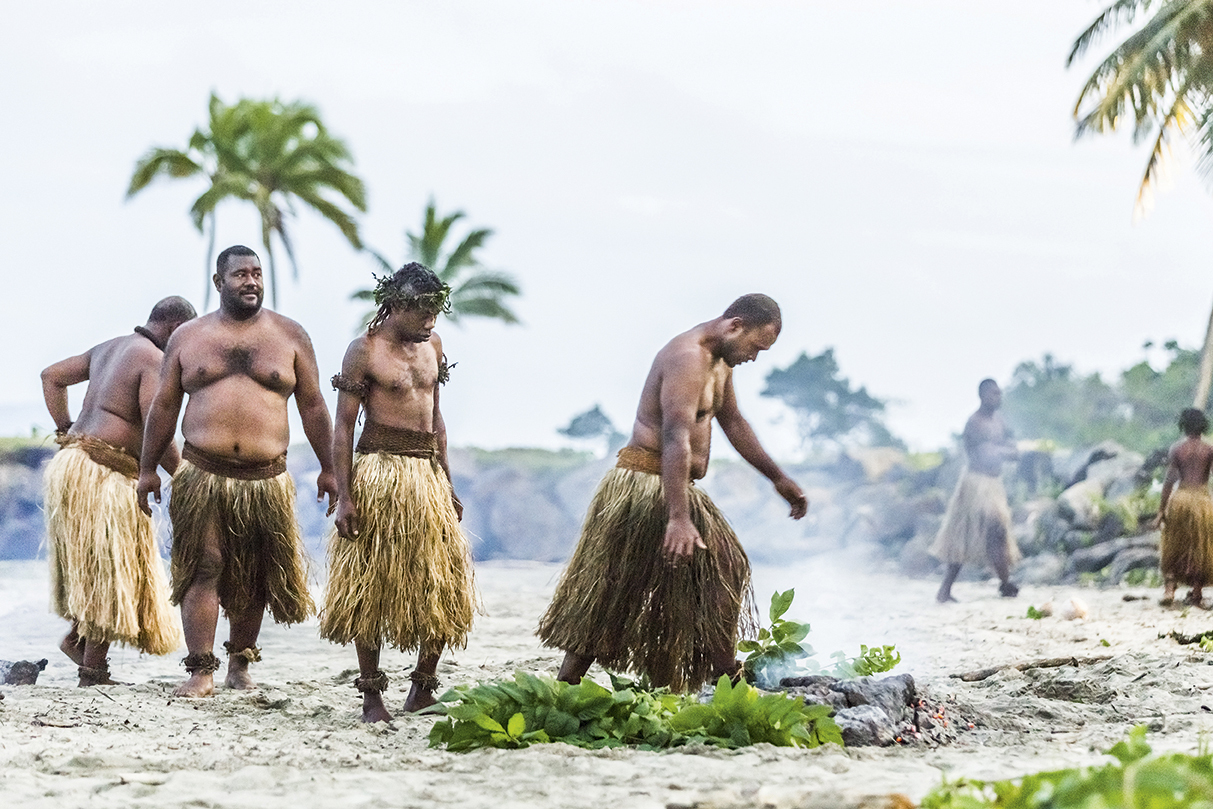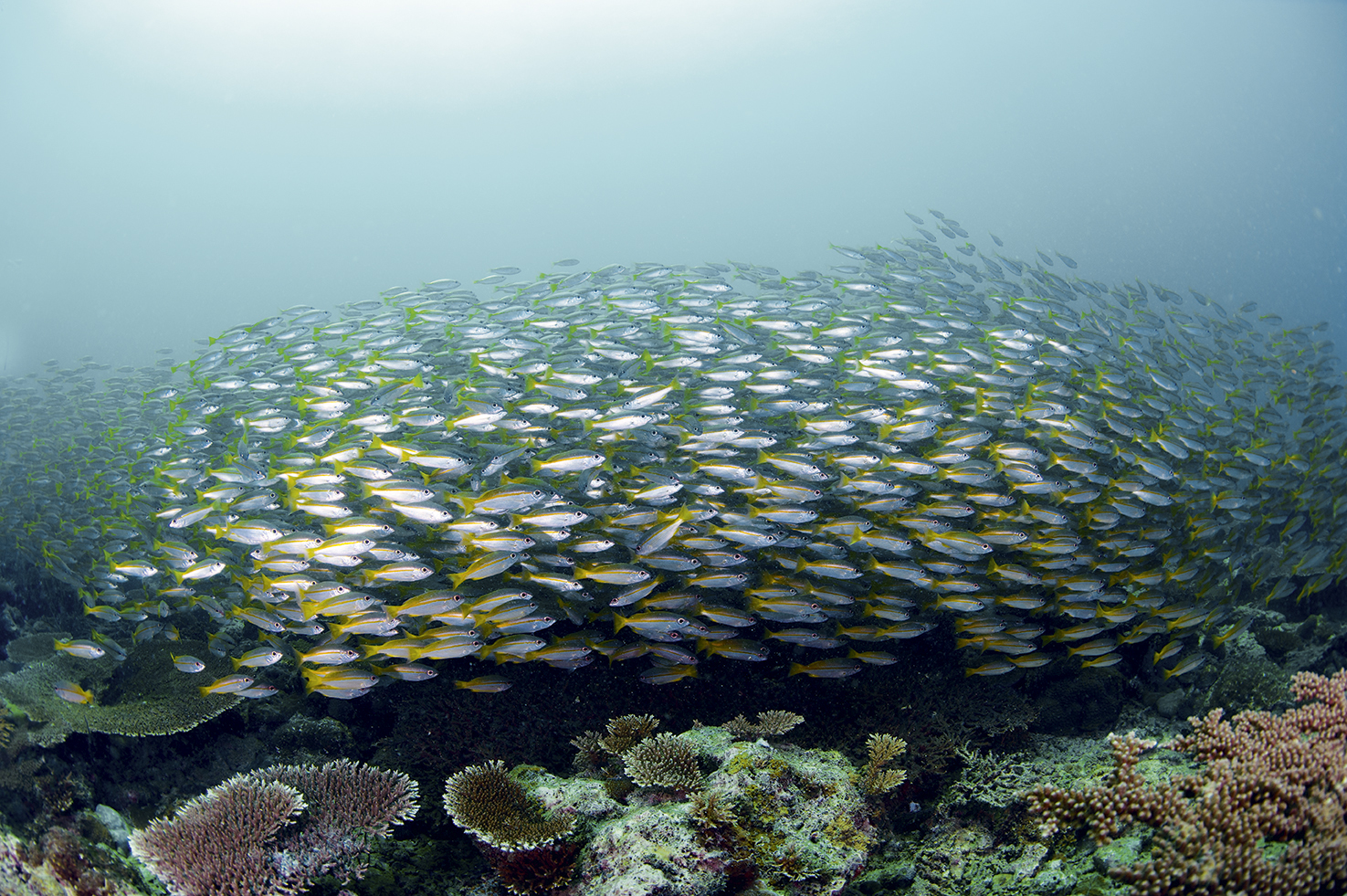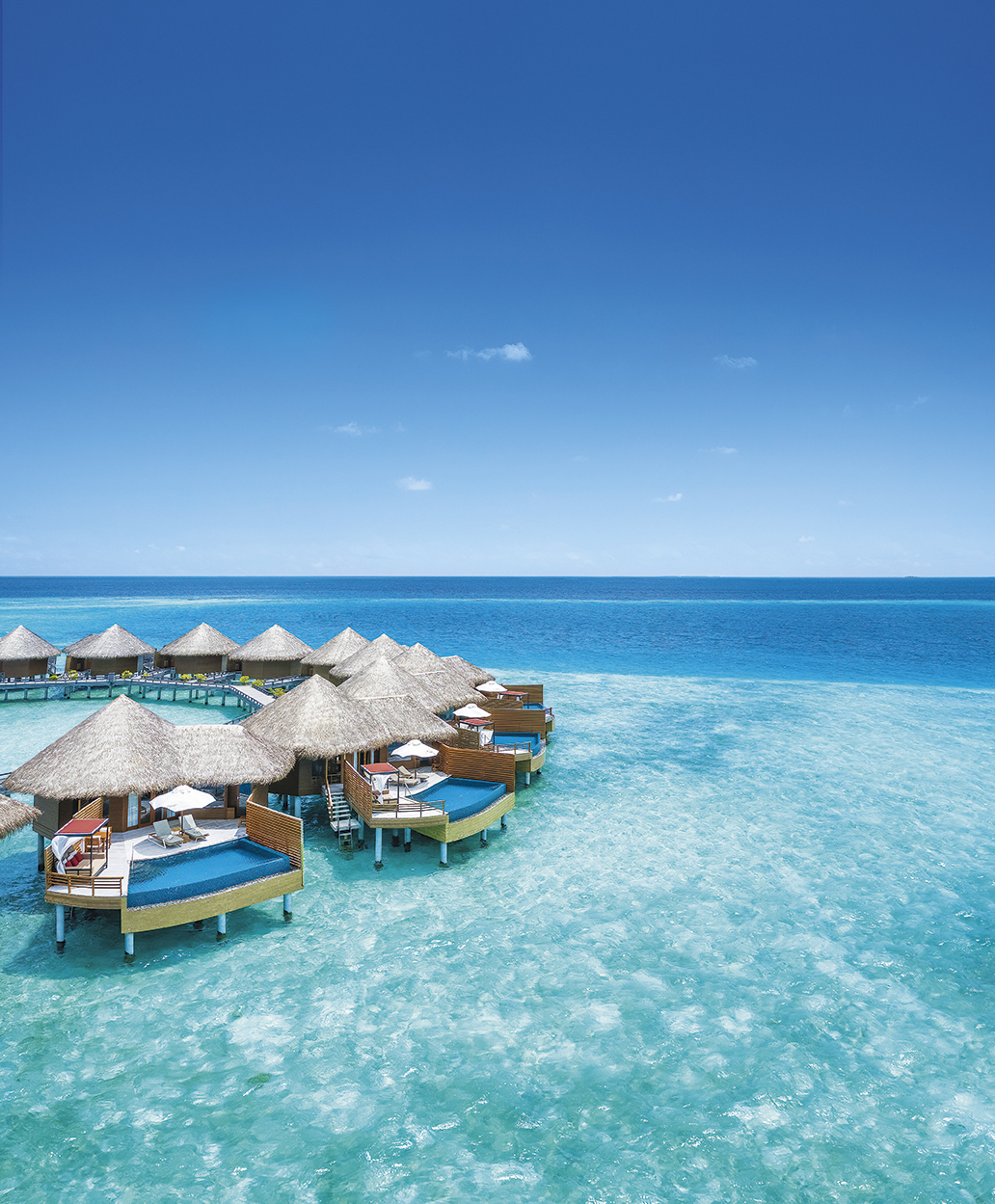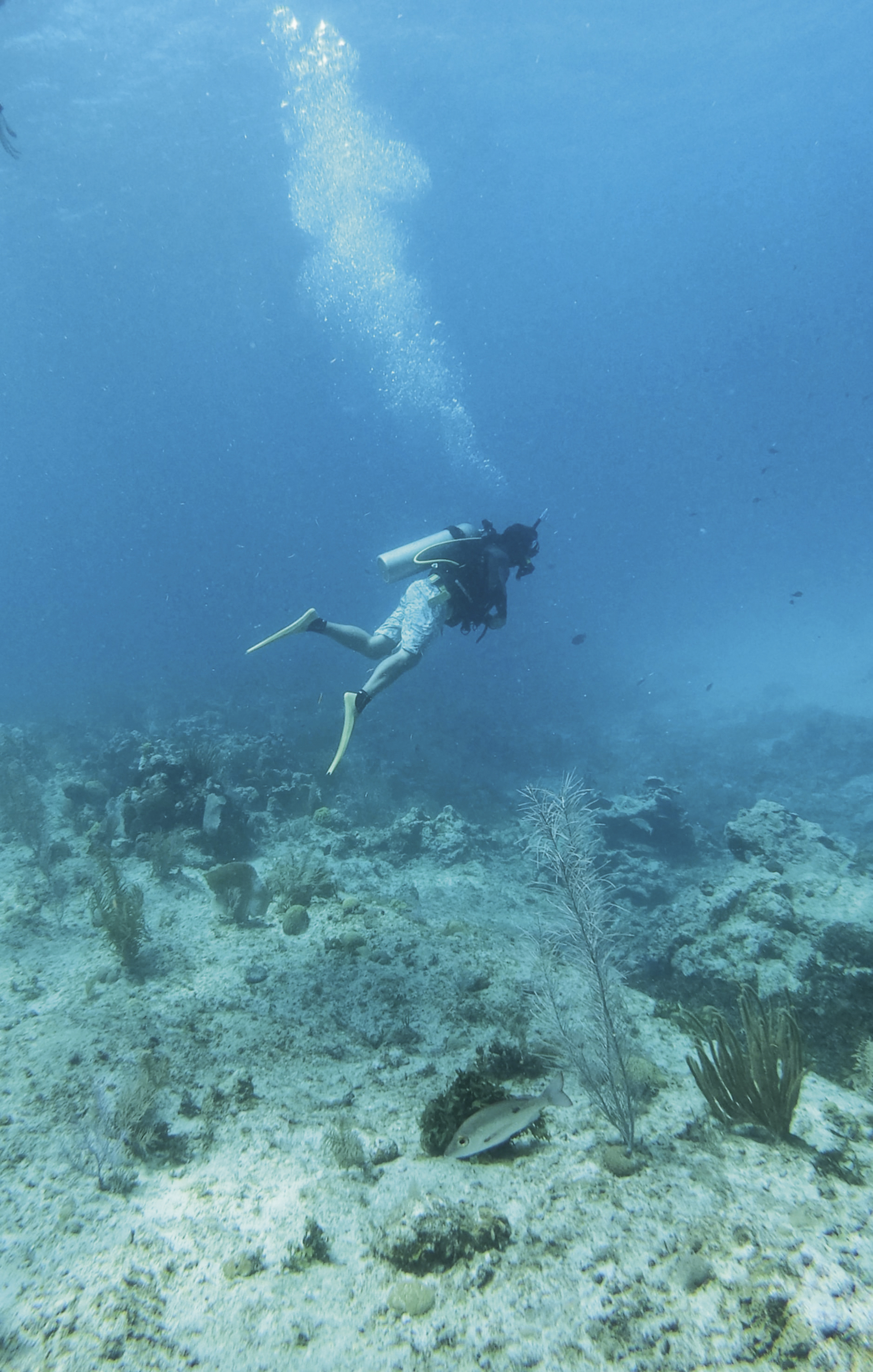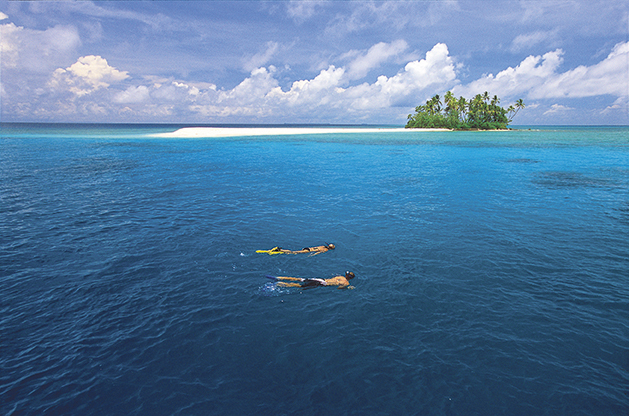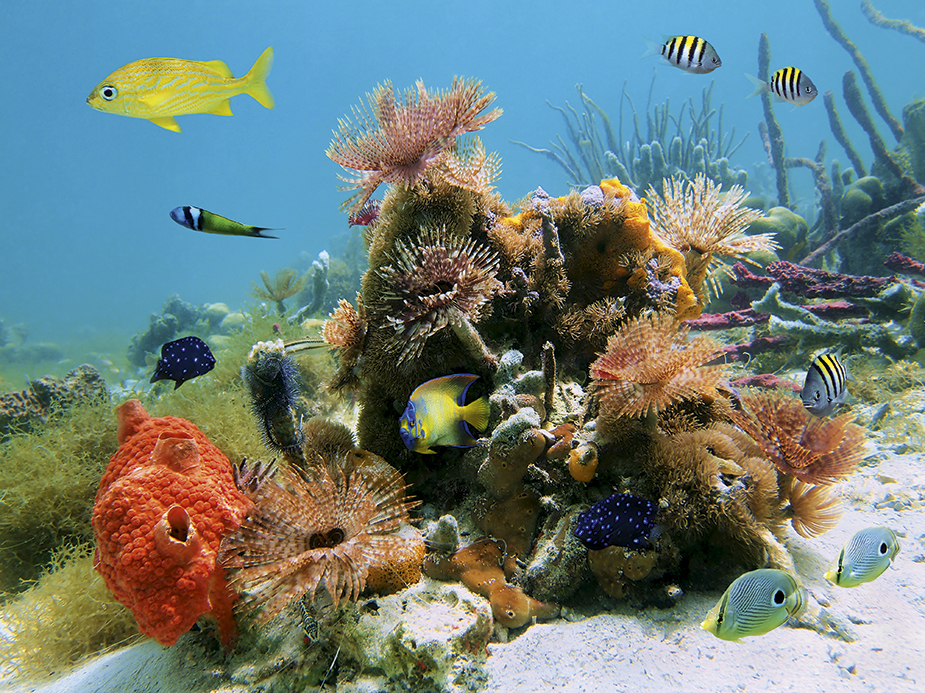Isla Del Coco Costa Rica
Peaks and promontories draped in deep green, plunging into dark blue depths: the first sighting of Isla del Coco after 36 hours
aboard is heart-racing even for the most devoted diver. It may also seem strangely familiar since the island’s wilds were used for
filming Jurassic Park. Although dinosaurs are long gone above sea, their contemporaries still lurk beneath the blue. Isla del Coco’s
Unesco site, 550km from the mainland, is renowned for its shark
population – 14 species have been spotted here, some residents,
some migratory: bulls and silkys, white and black tips and even
mammoth Galapagos sharks. Come June, elusive whale sharks start
to appear, but the show-stealer is the scalloped hammerhead: the
island has the largest gathering of these migratory sharks in the
world. Watching them swirl, their telltale shadows outlined in the
sunlit shallows above, is a diver’s dream. Through 10-30m visibility,
you’ll also find marlin, sailfish, pilot whales and bottlenose dolphins
across 20 dive sites. It’s little wonder PADI rates the island as one of
the best places to scuba dive in the world.
Liveaboards are the only way to see this extraordinary marine
park, making it primarily a dive destination for serious underwater
adventurers. Still, snorkelling around Isla del Coco is spectacular.
Closer to shore, clear waters reveal hawksbill turtles, morays,
lobster, frogfish, rosy-lipped batfish and 27 endemic fish species.
Naturally, liveaboard menus are limited, but Aggressor Adventures
offers barbecues, local cuisine and hearty feasts. Fresh fish and veg
from the region take pride of place on the table, with fruit breakfasts,
salad bars, hot lunches, and plentiful three-course dinners.

